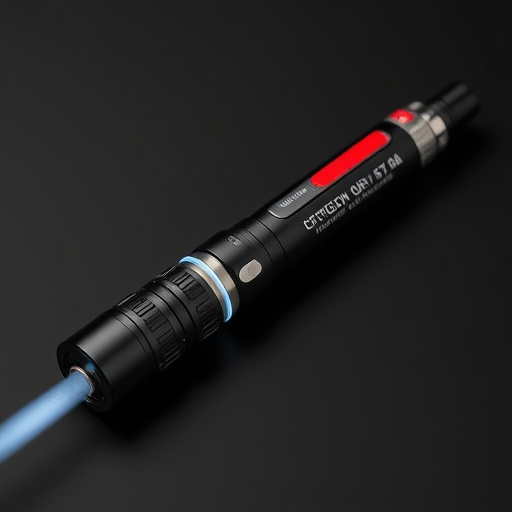Pen stun guns (electronic control devices or ECDs) are compact, legal personal protection tools that use high-voltage shocks to temporarily disable targets through nerve signal disruption. They offer precision and portability compared to tasers. Key specifications like voltage output, pulse duration, and range should be considered when purchasing based on needs and local laws. While effective for de-escalation, proper training is necessary for safe use. Legality varies; users must receive training, understand limitations, maintain devices responsibly, and know local laws to minimize risks.
“Discover the power of self-defense with a deeper look into pen stun guns—compact, yet potent tools designed to incapacitate assailants. In this comprehensive guide, we unravel the mechanics behind these devices, exploring how their debilitating electrical charges work and the significant impact they can have in high-risk situations.
From understanding key features to navigating legal considerations and safety protocols, this article equips you with vital knowledge about pen stun guns, empowering you to make informed decisions regarding personal protection.”
- Understanding Pen Stun Guns: A Comprehensive Overview
- Debilitating Electrical Charge: How They Work and Their Impact
- Legal and Safety Considerations for Pen Stun Guns
Understanding Pen Stun Guns: A Comprehensive Overview
Pen stun guns, also known as stun pens or electronic control devices (ECDs), are non-lethal weapons designed to incapacitate targets through a powerful electrical discharge. These compact and often discreet devices have gained popularity among individuals seeking personal protection due to their ease of use and legal availability in many regions. A pen stun gun typically delivers a high-voltage, low-amperage electric shock, causing muscle spasms and temporary paralysis, enabling the user to gain distance or neutralise a threat.
The technology behind these devices is straightforward yet effective. They usually consist of a rechargeable battery, a charging port, and a trigger mechanism. When activated, the stun gun emits an electrical current through metal prongs or contacts, delivering a shock that disrupts nerve signals in the targeted area. While often compared to tasers, pen stun guns differ in design and functionality, focusing on precision and portability rather than the broader impact of a stun pulse. Understanding these devices’ specifications, including voltage output, pulse duration, and range, is essential for users to make informed choices based on their specific needs and local legal frameworks.
Debilitating Electrical Charge: How They Work and Their Impact
Debilitating Electrical Charge: Unveiling Their Mechanics and Consequences
Pen stun guns, also known as electronic control devices (ECDs), utilize the power of electricity to temporarily incapacitate individuals. These non-lethal weapons emit a powerful electric current that disrupts the muscle control in a target’s body, causing them to lose balance and become immobile. The mechanism typically involves high-voltage, low-current electrical pulses delivered through metal probes or electrodes. When activated, the stun gun generates a strong shock, disrupting the nervous system’s signals and leading to muscle spasms.
The impact of such weapons is immediate and intense. A single discharge can render a person unconscious for several minutes, providing critical time for law enforcement or security personnel to subdue or de-escalate a situation. However, it’s essential to note that the effectiveness and potential side effects vary based on factors like the device’s power output, the duration of the pulse, and the target’s physical attributes. Proper training is crucial to ensure safe and effective use, minimizing risks associated with excessive force while maintaining public safety.
Legal and Safety Considerations for Pen Stun Guns
The use of pen stun guns, despite their compact size and seemingly non-lethal nature, raises significant legal and safety concerns. These devices, often marketed as personal defense tools, deliver high-voltage electrical shocks that can temporarily incapacitate a target, making them popular choices for individuals seeking self-protection. However, the legality of owning and carrying pen stun guns varies greatly across jurisdictions, with some regions allowing their use only by licensed professionals or law enforcement while others have strict restrictions on private citizens.
Safety is another critical aspect to consider. While pen stun guns are designed to minimize harm, incorrect usage or accidental discharge can still cause injuries, especially if the device is used on vulnerable individuals like children or pets. It’s crucial for users to receive proper training and understand the weapon’s limitations. Regular maintenance and awareness of local laws are also essential responsibilities to ensure responsible ownership and mitigate potential risks associated with pen stun guns.
Pen stun guns, with their devastating yet non-lethal electrical charge capabilities, offer a powerful tool for self-defense. As we’ve explored through this comprehensive overview and discussion of how they work and their legal considerations, it’s clear that these devices have significant potential to disable aggressors effectively while prioritizing safety. However, responsible ownership and understanding the legal boundaries surrounding them are paramount to ensuring their use remains justified and proportional. Always remember, knowledge is power—when wielded responsibly, a pen stun gun can be a game-changer in potentially dangerous situations.
